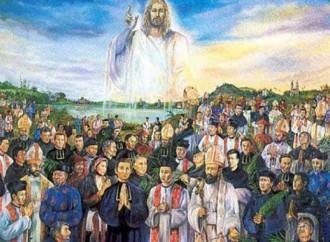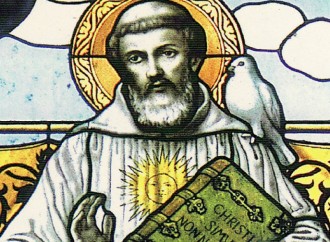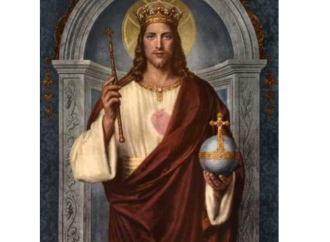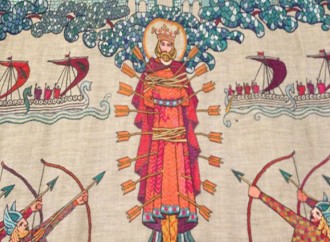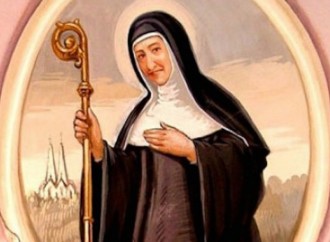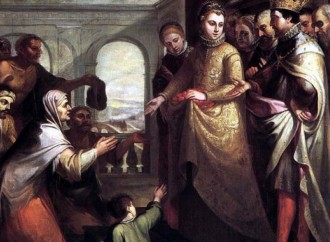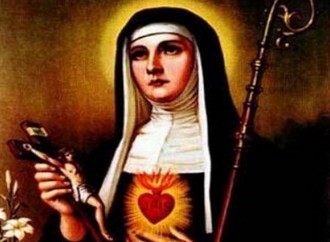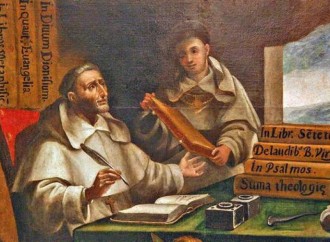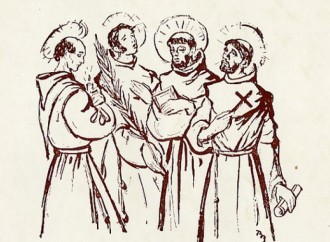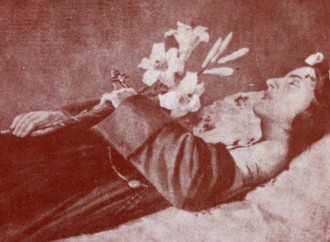Holy Martyrs of Vietnam
The 117 martyrs of Vietnam that the Church celebrates today remind us of how the Christian faith has been enlivened and transmitted over the centuries thanks to the example of many luminous witnesses, who accepted to sacrifice their lives to follow Christ crucified.
Saint Colomban
Benedict XVI called him “one of the Fathers of Europe”, because the life of Saint Colomban (543-615) recalls in an exemplary way the Christian roots of the Old Continent. He and his monks proclaimed the Gospel and had a profound impact on European culture through the work of the various monasteries founded in different countries.
Saint Cecilia
St Cecilia was a virgin from Rome who was martyred during the pontificate of St Urban I (222-230). Her story reveals her unconditional love for God, to whom she consecrated herself, demonstrating a faith so pure and strong that she converted many souls to Christianity.
Christ the King
“Then Pilate said to him: So you are king? Jesus answered: You say it. I am king” (Jn 18:37). The answer Our Lord gave Pilate resonates today on the solemnity of Christ, King of the Universe, introduced by Pius XI with the encyclical Quas Primas of 11 December 1925 to recall the kingship of God the Son over history and to remedy an evil that was already afflicting society at that time: secularism.
Saint Edmund
The King of East Anglia, according to tradition was crowned by Bishop Humbertus of Elmham on 25 December 855, when he was still an adolescent. The most famous hagiography is the Passio Sancti Eadmundi written by Saint Abbo of Fleury (945-1004), who dedicated his work to Saint Dunstan of Canterbury (909-988).
Saint Matilda of Hackeborn
Mysticism reached very high peaks with Matilda of Hackeborn (c. 1240-1298), one of the great saints who grew up at the monastery of Helfta in the 13th century. Her spiritual life is charted in that treasure chest that is The Book of Special Grace, born of the confidences made out of obedience to two sisters, who noted down her revelations.
Dedication of the basilicas of Saints Peter and Paul
Erected on the tombs of Saints Peter and Paul, not far from the places where they suffered martyrdom under Nero, the basilicas dedicated to them are remembered in a single commemoration.
Saint Elizabeth of Hungary
She was among the highest examples of Christian charity, which she exercised to the point of begging for the poor and the sick. In her short but very intense earthly life, Saint Elizabeth of Hungary (1207-1231) was a princess, bride, mother of three children, widow, and Franciscan tertiary.
Saint Gertrude the Great
Precursor of the cult of the Sacred Heart of Jesus, Saint Gertrude or Geltrude (1256-1302), known as the Great, was a mystic who spent almost all her life in that exceptional centre of spirituality and culture that was the Monastery of Helfta.
Saint Albert the Great
The genius of St Albert the Great (c. 1200-1280) can be appreciated simply through his explanation of the perfect harmony between faith and science, his teachings transmitted to St Thomas Aquinas and his critical appreciation of Aristotle.
Saints Nicholas Tavelić and Companions
We should not forget the example of these four glorious Franciscan martyrs (†14 November 1391), who spent years in the Holy Land to guard the places of the life, death and resurrection of Our Lord. Imitating Saint Francis in his encounter with the Sultan, they announced Jesus Christ to the Muslims.
Saint Agostina Pietrantoni
Saint Agostina Pietrantoni (1864-1894) lived in the years immediately following the Unification of Italy, marked by radical hostility to Catholicism on the part of power. She served God by giving herself to the sick...

